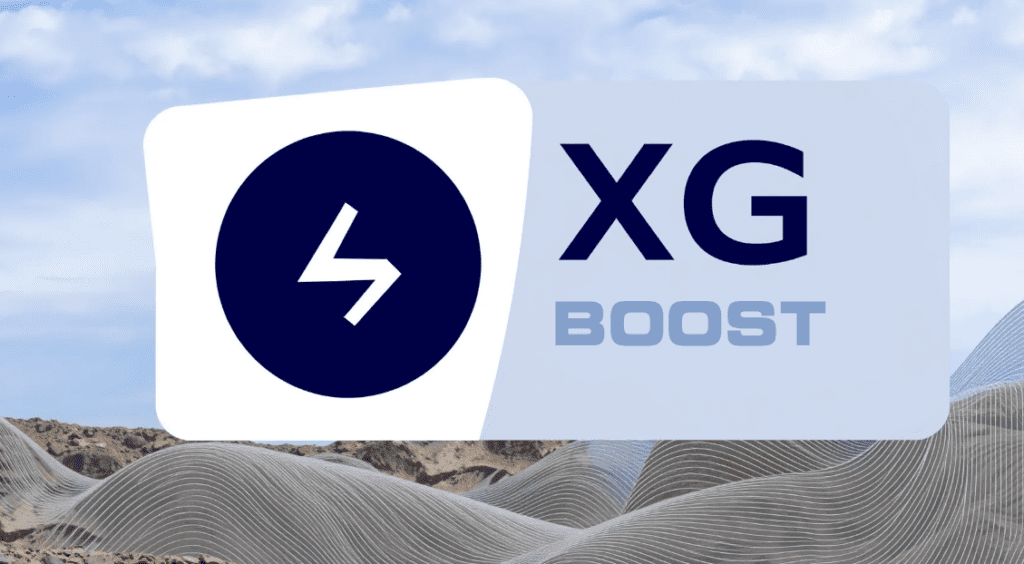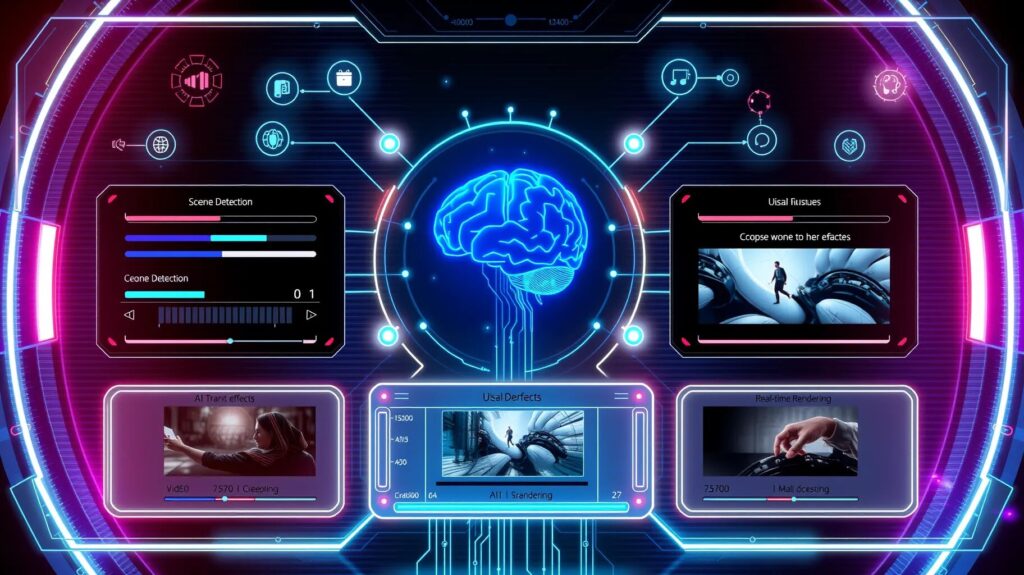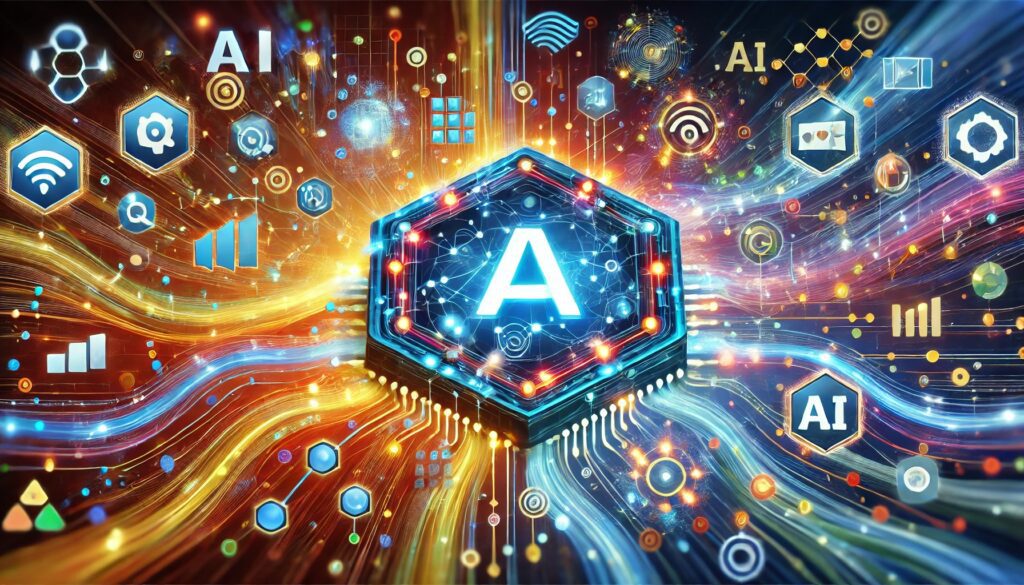
With no-code tools, even non-technical individuals can create sophisticated AI systems tailored to personal or business needs. AI coaches—virtual assistants that help with tasks like productivity, wellness, and learning—are becoming increasingly popular.
Here’s how you can build your own AI coach without writing a single line of code.
Understanding No-Code AI: What You Need to Know
What Does “No-Code” Mean?
No-code platforms allow users to build applications or systems using visual interfaces instead of traditional programming. Think drag-and-drop builders, pre-designed templates, and plug-and-play functionality.
This is perfect for people who want to focus on creativity and functionality rather than coding. It also speeds up development.
Why Build an AI Coach?
An AI coach can handle tasks like:
- Automating daily reminders.
- Offering personalized advice or training.
- Managing schedules or goal-setting.
Whether for personal productivity or professional coaching, an AI coach can save time and enhance outcomes.
Key Features of No-Code AI Tools
- Pre-built integrations with popular platforms (like Google Workspace).
- AI capabilities like natural language processing (NLP).
- Scalability for both small projects and enterprise needs.
Choosing the Right No-Code AI Platform
Best Platforms to Get Started
Several no-code tools are ideal for building AI-powered systems. Here are a few options:
- Bubble: Great for creating complex workflows and user interfaces.
- Peltarion: Offers a straightforward way to train and deploy machine learning models.
- Voiceflow: Perfect for conversational AI (like chatbots or voice assistants).
Each platform has strengths, so your choice depends on the functionality you need.
Important Considerations
- Ease of Use: How intuitive is the platform?
- Cost: Some platforms offer free plans, but premium features may come at a cost.
- Scalability: Will the platform support your needs as your AI coach evolves?
Core Tools You’ll Need
At a minimum, look for platforms that provide:
- Text-based interfaces (for chat functions).
- Data analysis tools (to process user inputs).
- Integrations with tools like Zapier for automation.
Setting Up the Basics for Your AI Coach
Step 1: Define the Coach’s Purpose
First, decide what your AI coach will do. Will it:
- Help users build habits?
- Offer career coaching tips?
- Track fitness or health goals?
Having a clear purpose makes the development process smoother.
Step 2: Build a Conversational Framework
AI coaches often rely on natural conversations to engage users. Use NLP tools like Dialogflow or OpenAI’s APIs (some no-code platforms integrate these directly) to create lifelike responses.
Step 3: Collect Data for Personalization
Personalization is key to a successful AI coach. Include features that let users:
- Input their preferences.
- Set goals.
- Track progress over time.
Many no-code tools include pre-made data collection modules to simplify this process.
Integrating AI Capabilities Without Coding
Natural Language Understanding (NLU)
An AI coach needs to understand user input. Tools like Rasa or Dialogflow can be integrated into no-code platforms for this purpose.
Automation Features
No-code tools like Zapier or Integromat enable automation. For example, you can program your AI coach to send reminders or notifications based on user actions.
Visual Dashboards
Add a visual dashboard using tools like Airtable or Glide Apps. Dashboards give users a quick overview of their goals, progress, or insights provided by the AI.
Advanced Features to Make Your AI Coach Stand Out
Now that you have a basic framework for your AI coach, it’s time to add features that elevate user experience. Advanced functionality ensures your coach remains engaging, effective, and tailored to users’ needs.

Adding Personalization to Boost User Engagement
Dynamic Goal Tracking
Personalized goal tracking makes the AI coach feel like a dedicated assistant. Use tools like Airtable or Google Sheets integrations to:
- Track daily habits or milestones.
- Send automated progress reports.
- Offer motivational messages based on user behavior.
AI-Driven Recommendations
With machine learning tools like Peltarion or pre-trained models in Azure AI, your AI coach can analyze user data to:
- Suggest new habits or activities.
- Recommend productivity tips based on patterns.
- Adapt its approach based on the user’s progress.
Context Awareness
Contextual understanding enhances conversations. NLP-powered tools (like ChatGPT APIs) can allow the coach to “remember” user preferences and past interactions. This creates a seamless, personalized experience.
Leveraging Gamification to Increase Engagement
Create Rewards and Challenges
Gamification keeps users motivated. Use your no-code platform to add:
- Points or badges for task completion.
- Weekly or monthly challenges.
- Leaderboards for friendly competition (great for team-oriented users).
Progress Visualization
People love seeing their success visually. Use dashboards (via Glide Apps or Notion integrations) to display:
- Daily streaks.
- Graphs of goal completion.
- Long-term progress summaries.
Instant Feedback
Feedback loops keep users engaged. Add features that give:
- Immediate responses to inputs (like positive reinforcement).
- Suggestions for overcoming missed goals.
Integrating Voice and Conversational AI
Build a Voice Interface
Voice functionality makes the AI coach more accessible. Platforms like Voiceflow can help create:
- Voice-based task management.
- Real-time spoken advice or coaching.
- Integration with smart devices (Alexa, Google Assistant).
Enhance Conversations with Emotional AI
Some advanced no-code platforms now integrate emotional AI features. For example:
- Affectiva can help detect mood through text or voice tone.
- Your AI coach can respond empathetically to user frustrations or excitement.
Multichannel Compatibility
Allow users to interact with their coach across platforms like:
- SMS (using tools like Twilio).
- Social media DMs (via Zapier or Meta APIs).
- Email (automated workflows for reminders and check-ins).
Automation for Effortless Productivity
Seamless Task Scheduling
Integrate Google Calendar or Microsoft Outlook via tools like Zapier to:
- Add tasks directly from conversations.
- Set reminders for deadlines or goals.
- Adjust schedules dynamically based on user input.
Workflow Automation
Connect your AI coach to existing workflows using:
- Integromat for conditional automations.
- Zapier for “if-this-then-that” scenarios.
- Built-in triggers within no-code platforms to streamline repetitive tasks.

Analyzing and Improving the AI Coach
Gather Feedback
Incorporate a feedback loop where users can:
- Rate their experience.
- Suggest new features.
- Report issues with responses or functionality.
Refine With User Data
Use analytics tools (like Google Analytics or Mixpanel) to track user behavior. Key insights include:
- Features users engage with most.
- Drop-off points in conversations.
- Demographics and usage patterns.
Continuous Learning
Connect your no-code platform to an AI training tool (like Peltarion) for continuous updates. This allows your AI coach to:
- Adapt to changing trends.
- Improve its conversational skills.
- Expand its capabilities over time.
Monetizing Your AI Coach
Offer Premium Features
If your AI coach is for a business or public release, consider:
- Paid tiers with exclusive capabilities (like advanced analytics).
- Subscription-based services for personalized coaching plans.
- In-app purchases (e.g., additional customization options).
Build a Community
Create a sense of belonging by connecting users. This could include:
- Forums or Slack groups for mutual support.
- Monthly webinars featuring expert advice.
Final Optimization Tips for Your AI Coach
The hard work is done! Now, it’s time to fine-tune your AI coach for performance, scalability, and user satisfaction. Optimization ensures your coach remains relevant and delivers maximum value over time.
Prioritize Scalability
Prepare for User Growth
If you’re launching publicly, scalability is key. Use no-code tools with robust infrastructure, like:
- Webflow or Bubble for app scalability.
- Cloud services like AWS or Google Cloud for backend support.
Design your AI coach to handle increasing data and interactions without lag or errors.
Implement Tiered Functionality
Ensure your AI coach can offer varying levels of support. For example:
- Basic plans for casual users.
- Advanced features for premium subscribers.
- Scalability in database storage for user inputs and preferences.
Optimize Response Times
Slow responses hurt user satisfaction. Optimize by:
- Reducing redundant workflows.
- Using AI models with fast processing times.
- Testing for efficiency on multiple devices and platforms.
Focus on Data Privacy and Security
Comply with Data Regulations
Users trust their AI coach with sensitive information. Adhere to standards like:
- GDPR (for EU users).
- CCPA (for California users).
- HIPAA (if dealing with health-related data).
Ensure that your no-code platform provides secure data handling and encryption.
Add Transparency
Let users know how their data is stored and used. Add features like:
- Clear data usage policies.
- Opt-out options for data tracking.
- Regular reminders about user privacy rights.
Continuously Improve User Experience
Regular Updates
Stay ahead by frequently updating your AI coach:
- Add new features based on user feedback.
- Refine conversational scripts for clarity and engagement.
- Incorporate cutting-edge AI models when possible.
Run A/B Testing
Test new features with subsets of users to see what works. Platforms like Optimizely or Google Optimize are great for A/B testing. Focus on:
- User retention rates.
- Engagement with new features.
- Overall satisfaction scores.
Include Accessibility Features
Make your AI coach usable for everyone. Add:
- Voice commands for visually impaired users.
- Simple language options for clarity.
- Customizable interfaces to suit different needs.
Marketing and Launch Strategies
Build Buzz Before Launch
Market your AI coach effectively to reach your audience. Use strategies like:
- Pre-launch email campaigns.
- Social media teasers with feature highlights.
- Beta testing invitations to create exclusivity.
Partner with Influencers
Collaborate with influencers or industry experts to promote your AI coach. Their endorsement can help build trust and attract users.
Showcase Success Stories
Highlight testimonials and case studies of users who benefited from your AI coach. This reinforces credibility and encourages sign-ups.
Conclusion: Empowering Everyone With AI
Building an AI coach using no-code platforms opens opportunities for everyone, from individuals looking to boost productivity to businesses enhancing customer experiences. With user-friendly tools, advanced integrations, and a focus on personalization, you can create a solution that is as innovative as it is effective.
Get started today, and turn your AI coach vision into reality!
FAQs
How Long Will It Take to Build?
The time required depends on complexity:
- Simple AI coaches (basic chat functionality): 1-2 days.
- Moderate AI coaches (personalization, tracking): 1-2 weeks.
- Advanced AI coaches (voice interface, machine learning): 1-2 months.
Example: A habit-tracking coach using Glide and Airtable might take just a weekend to set up.
Can I Add Multilingual Capabilities to My AI Coach?
Yes, many platforms offer multilingual support or integrate with translation APIs like Google Translate or DeepL.
Example: A global career coach could engage users in English, Spanish, and French by integrating Dialogflow’s language processing features.
Can My AI Coach Work Offline?
No-code platforms primarily create web-based or cloud-dependent solutions. However, some tools allow limited offline functionality by caching data.
- Mobile apps built with Glide or Adalo can store basic data offline.
- Offline workflows require additional customization, often with low-code solutions.
Example: A journaling AI coach might allow users to draft entries offline, syncing their data once they reconnect.
How Do I Train My AI Coach for Specific Tasks?
Training involves creating scenarios and responses within the no-code platform. For advanced tasks, integrate tools like OpenAI or IBM Watson for:
- Custom natural language understanding (NLU).
- Predictive recommendations.
Example: If you’re creating a financial coach, you could train it to understand common budgeting queries like, “How much should I save this month?”
How Can I Make My AI Coach Sound More Human?
Creating a conversational tone is key. Tips include:
- Using NLP tools like Dialogflow or ChatGPT to generate natural responses.
- Adding custom scripts to include empathy or humor.
- Using emotional AI integrations to detect user mood and adapt responses.
Example: A parenting coach could respond empathetically to stressed users by saying, “It’s okay to feel overwhelmed—you’re doing your best!”
What If I Want to Integrate Physical Sensors or IoT Devices?
No-code platforms like Integromat (Make) or Zapier enable integrations with IoT devices. This is useful for AI coaches in fitness, wellness, or home automation.
- Fitness devices (e.g., Fitbit, Apple Watch).
- Smart home devices (e.g., Alexa, Google Nest).
Example: A sleep coach could analyze data from a smart mattress and suggest bedtime routines based on sleep quality.
Can My AI Coach Work for Teams or Organizations?
Yes! Many no-code platforms support team-oriented workflows, which are ideal for businesses.
- Use shared dashboards to track team goals.
- Create role-based access for managers and employees.
Example: A project management coach could assign tasks to team members and provide progress updates via Slack or Microsoft Teams.
How Do I Test My AI Coach Before Launching?
Testing is critical to ensure a smooth launch. Follow these steps:
- Run usability tests with a small group of users.
- Use analytics tools to track user behavior during testing.
- Check for conversational flow and logical errors in responses.
Example: A career coach might be tested with mock job seekers, using feedback to refine interview advice or resume tips.
What Happens If My AI Coach Gets Stuck on a Question?
Set fallback mechanisms within your AI. These could include:
- Redirecting users to human support via email or chat.
- Programming polite responses like, “I’m not sure about that, but let me find out!”
- Expanding the training dataset to cover missing topics.
Example: A customer support coach could connect users to a live agent if it encounters an unusual query.
Are There Any Limitations to No-Code AI?
While powerful, no-code tools have some limitations:
- Advanced AI capabilities may require external integrations.
- Custom, highly specific workflows might need low-code or fully coded solutions.
Example: If you want your AI coach to analyze video input (e.g., for fitness form correction), you’d need specialized coding or APIs.
Can My AI Coach Be Voice-Activated?
Yes, platforms like Voiceflow or Twilio allow you to build voice-activated AI solutions. Integrating with virtual assistants (like Alexa or Siri) expands usability.
Example: A voice-activated wellness coach could respond to “What’s my stress level today?” and provide relaxation tips.
How to Make Predictions
Predictive AI allows your coach to anticipate user needs. Use platforms like Peltarion or BigML to integrate machine learning without coding.
- Track user behavior patterns.
- Analyze historical data for better suggestions.
- Offer reminders or tips before users ask.
Example: A productivity coach might detect recurring late-night activity and suggest winding down earlier for better rest.
Integrate Behavioral Triggers
Use no-code tools to set behavioral triggers based on user input or progress.
- Automate positive feedback after task completion.
- Suggest corrective actions when users fall behind.
Example: A fitness AI coach could send motivational messages if workouts are skipped for two days in a row.
Expanding the AI Coach Ecosystem
Connecting to Other Services
Enhance usability by integrating your AI coach with external services. Use no-code platforms like Zapier, Integromat, or IFTTT to connect:
- Calendars for automated scheduling.
- CRMs (e.g., HubSpot) for business coaches.
- E-commerce platforms for shopping assistance.
Example: A wellness coach could recommend healthy recipes by integrating with a meal-planning app like MyFitnessPal.
Offer Cross-Device Compatibility
Ensure your AI coach works seamlessly on mobile, desktop, and smart devices. Tools like Glide or Thunkable can create responsive applications.
Example: A mindfulness coach could deliver audio meditations via a phone app while syncing progress to a web dashboard.
Enhancing Engagement With Interactive Features
Gamified Progress Tracking
Gamification keeps users motivated. Build these elements into your no-code app:
- Progress bars or streak counters.
- Unlockable achievements for hitting milestones.
- Friendly challenges with AI-generated competitors.
Example: A language learning AI coach might reward users with badges after completing daily vocabulary goals.
Multimedia Integration
Incorporate videos, audio, or images for a richer experience. Tools like Canva APIs or built-in multimedia options in Glide can help.
Example: A career coach could include video tutorials on interview skills or create custom résumé templates.
User-Generated Input
Let users interact more dynamically with features like:
- Journaling tools (sync data with Airtable).
- Uploading files for review (e.g., résumés or fitness logs).
- Surveys for setting personalized goals.
Example: An AI coach for writers could provide tailored feedback after users upload sample paragraphs.
Building Loyalty With Community Features
Foster User Connections
Create an ecosystem where users feel part of a community. No-code platforms allow integration of forums, groups, or team features.
- Use Discourse for forums.
- Add Slack or Discord integrations for chat.
Example: A self-improvement coach could host a “30-Day Challenge” group where users share tips and progress.
Implement Collaborative Workflows
Enable features where teams or families can interact with the AI coach together.
- Shared calendars or goal trackers.
- Task delegation features for group projects.
Example: A family wellness coach might suggest joint activities like meal prep schedules or shared fitness goals.
Making Continuous Improvements
Analyze User Feedback
Embed feedback mechanisms into your app. Use forms (like Typeform or Google Forms) or in-app ratings to collect user input.
Example: If users report the AI coach’s tone feels impersonal, you can tweak conversation scripts for a warmer touch.
Use A/B Testing for Feature Rollouts
When adding new features, test variations to find the best version. No-code platforms like Optimizely or Google Optimize can help you track:
- User engagement rates.
- Feature adoption metrics.
- Retention improvements.
Example: Test two different dashboard layouts for a fitness AI coach and keep the one users find more intuitive.
Monitor Performance Metrics
Track KPIs like user retention, engagement, and feature adoption using analytics tools:
- Mixpanel or Amplitude for in-depth data.
- Built-in analytics dashboards from your no-code platform.
Example: Discover which times of day users interact most and schedule reminders accordingly.
No-Code Platforms for Building AI Coaches
All-in-One Platforms
- Bubble: A powerful tool for building fully custom web apps with AI integrations. Website
- Adalo: Ideal for creating mobile apps with drag-and-drop ease. Website
- Glide: Turns Google Sheets into apps, perfect for simple AI-driven dashboards. Website
Specialized AI Tools
- Voiceflow: Best for designing conversational AI experiences (chatbots, voice assistants). Website
- Peltarion: Simplifies machine learning deployment for no-code users. Website
- Dialogflow: Google’s NLP tool for creating conversational AI interfaces.
Automation Tools
- Zapier: Connects apps and automates workflows without coding. Website
- Make (formerly Integromat): Great for creating multi-step, conditional workflows. Website
Platforms for AI Model Integration
Pre-Trained Models
- OpenAI API: Build conversational AI using GPT-based models.
- Hugging Face: A repository of pre-trained models for NLP, vision, and more.
- IBM Watson: Offers tools for language understanding, voice, and predictive analytics.
Hosting and Deployment
- Google Cloud AI: Comprehensive tools for AI deployment and data analysis.
- AWS AI Services: Scalable AI solutions for enterprises. Website
- Azure AI: Microsoft’s suite for building and integrating AI capabilities. Website
Tools for Enhancing User Experience
Analytics and Feedback
- Mixpanel: Tracks user engagement and behavioral metrics. Website
- Typeform: Create surveys for collecting user feedback. Website
- Hotjar: Analyze user interactions with heatmaps and session recordings. Website
Design and Media
- Canva: For creating graphics and multimedia content. Website
- Figma: A design tool for crafting app interfaces and prototypes. Website
- Unsplash: Free stock images for visual enhancements. Website





